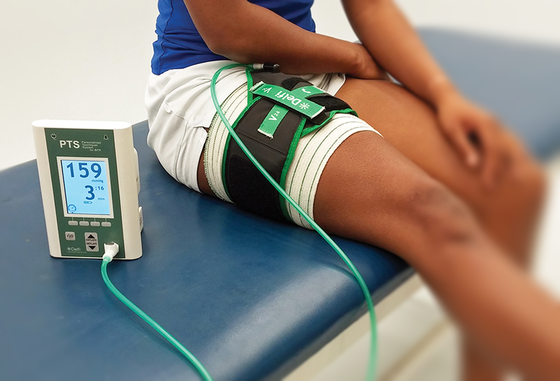Blood Flow Restriction (BFR) Training
Benefits of BFR Training
Traditional resistance training guidelines recommend that individuals lift loads greater than 70% 1-RM to obtain gains in strength and hypertrophy. Unfortunately, people recovering from surgery or injury, athletes in a competitive season, and the elderly may not be candidates for such high load training. That’s where BFR comes in. There is mounting evidence that now supports that low-load resistance training (30% 1-RM) combined with BFR can induce similar muscle hypertrophy and strength gains, as compared to high intensity training. In other words, the metabolic stress from BFR can be just as effective in inducing hypertrophic changes as compared to the mechanical stress of lifting heavy weights. The beauty of using BFR though is that we can do so without putting excessive stress on patient’s joints. This makes it a great tool for post-surgical patients, elderly, etc.
How does it work?
BFR creates an anaerobic environment in the limb. This hypoxia promotes increased recruitment of the largest fast-twitch muscle fibers, which are normally reserved for more strenuous exercise. These fibers have the greatest capacity to grow, which subsequently leads to increased hypertrophy and strength gains.
BFR also creates metabolite accumulation (i.e., lactic acid), which stimulates an increase in serum growth hormone (GH). This rise in GH promotes collagen synthesis for tissue repair and recovery, which is vital for muscle development. This rise in GH also causes an increase in insulin-like growth factor-1 (IGF-1) production, which is a protein linked to muscle growth.
- Low intensity exercise + BFR has shown to produce an equivalent amount of GH and IGF-1 secretion as compared to high intensity exercise, thereby leading to similar gains in strength/muscle mass.

